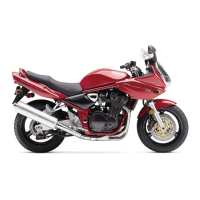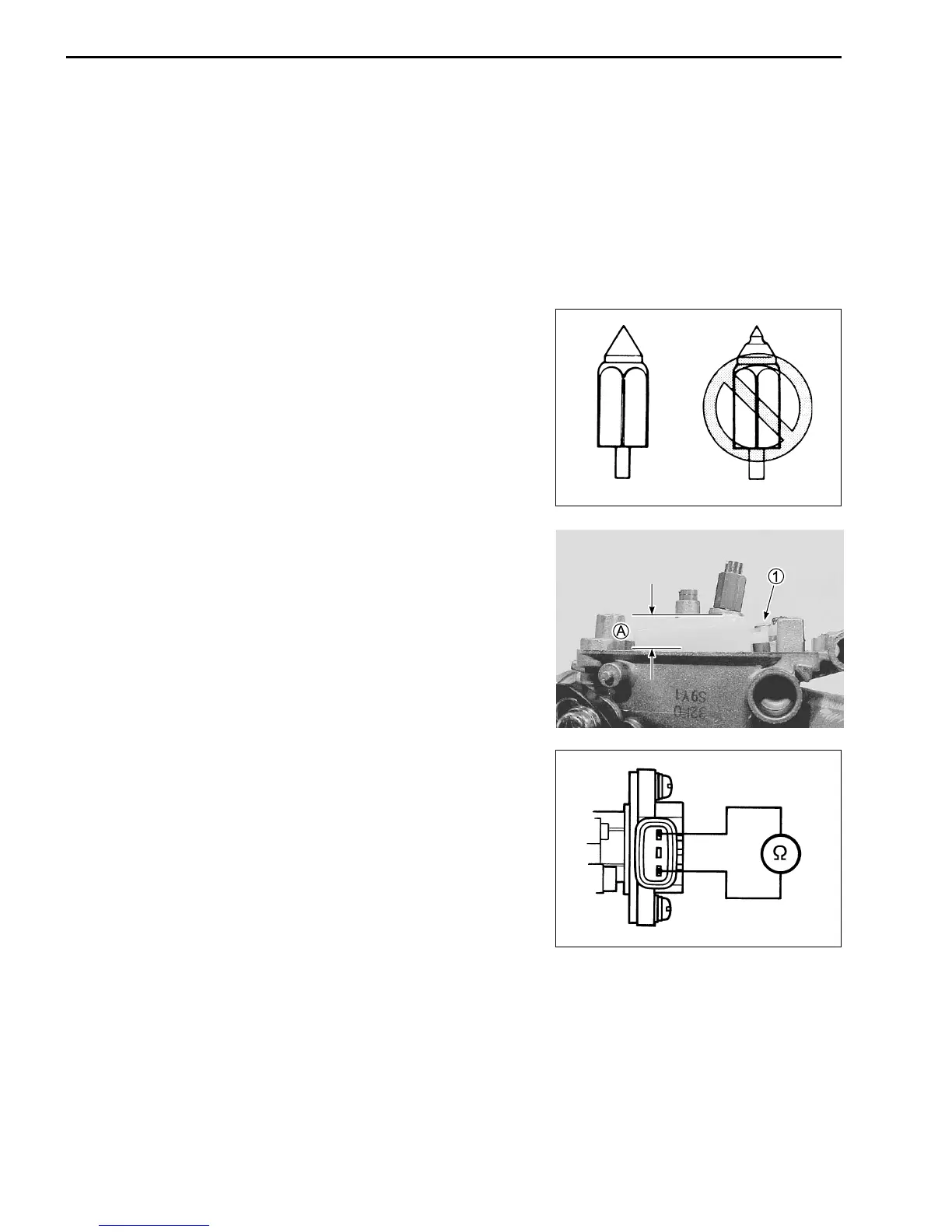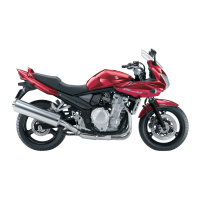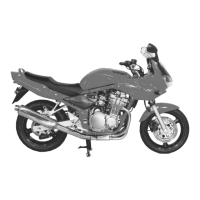4-20 FUEL SYSTEM
CARBURETOR INSPECTION
Check the following items for any damage or clogging.
* Pilot jet * Valve seat
* Main jet * Piston valve
* Main air jet * Starter (enricher) jet
* Pilot air jet * Gasket and O-ring
* Needle jet air bleeding hole * Throttle shaft oil seal
* Float * Diaphragm
* Needle valve * Pilot outlet and by-pass ports
* Jet needle
NEEDLE VALVE INSPECTION
If foreign matter is caught between the valve seat and the needle
valve, the gasoline will continue flowing and overflow. If the valve
seat and needle valve are worn beyond the permissible limits,
similar trouble will occur. Conversely, if the needle valve sticks,
the gasoline will not flow into the float chamber. Clean the float
chamber and float parts with gasoline. If the needle valve is worn,
as shown in the illustration, replace it along with a new valve
seat. Clean the fuel passage of the mixing chamber using com-
pressed air.
FLOAT HEIGHT ADJUSTMENT
To check the float height, turn the carburetor upside down.
Measure the float height A while the float arm is just contacting
the needle valve using vernier calipers.
Bend the tongue 1 as necessary to bring the float height A to
the specified level.
$ 09900-20102: Vernier calipers
& Float height A: 13.0 ± 0.5 mm (0.51 ± 0.04 in)
THROTTLE POSITION SENSOR INSPECTION
Measure the resistance between the terminals as shown.
$ 09900-25008: Multi circuit tester set
& Throttle position sensor resistance: 3.5 – 6.5 k
ΩΩ
ΩΩ
Ω
NOTE:
When performing this test, it is not necessary to remove the throttle
position sensor.
CORRECT INCORRECT

